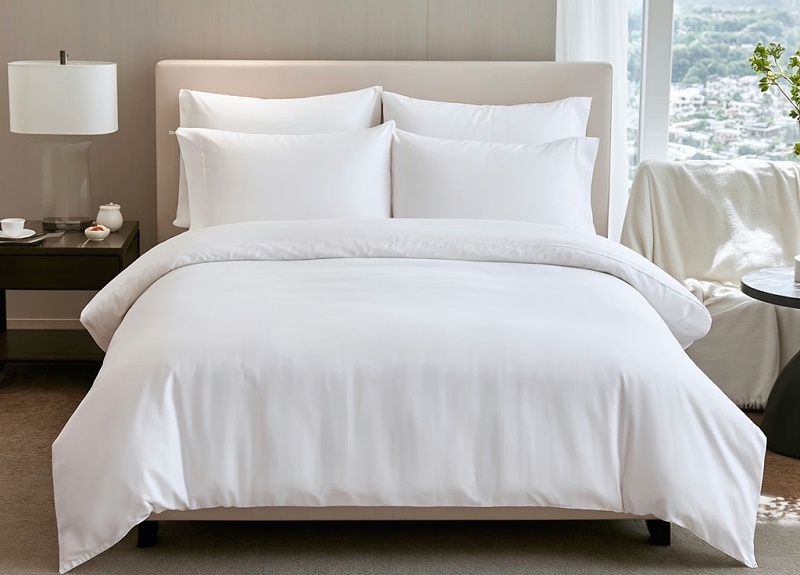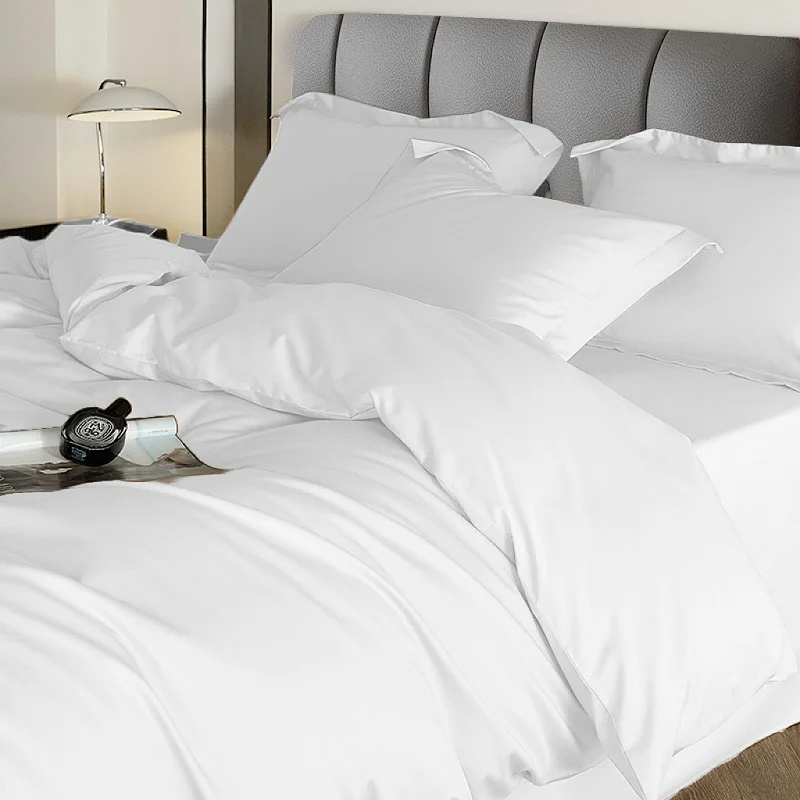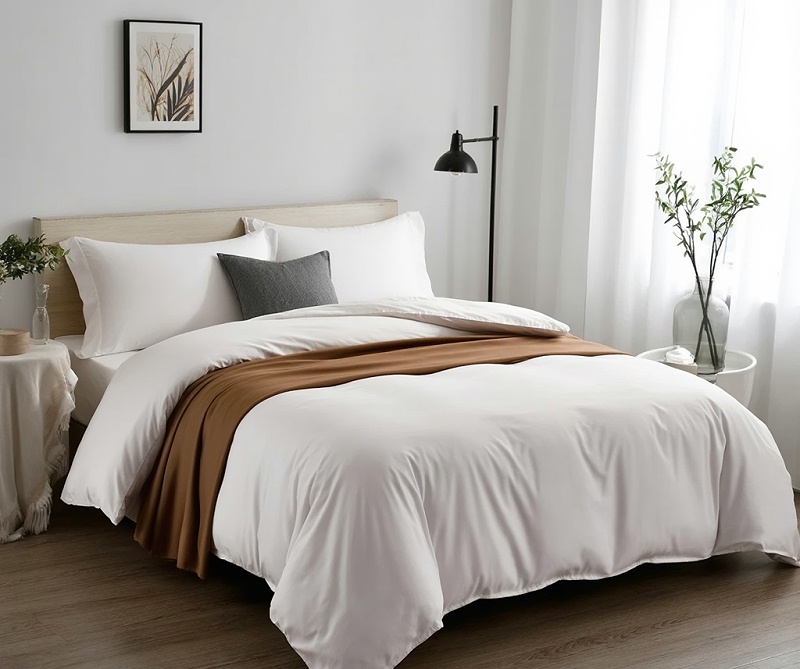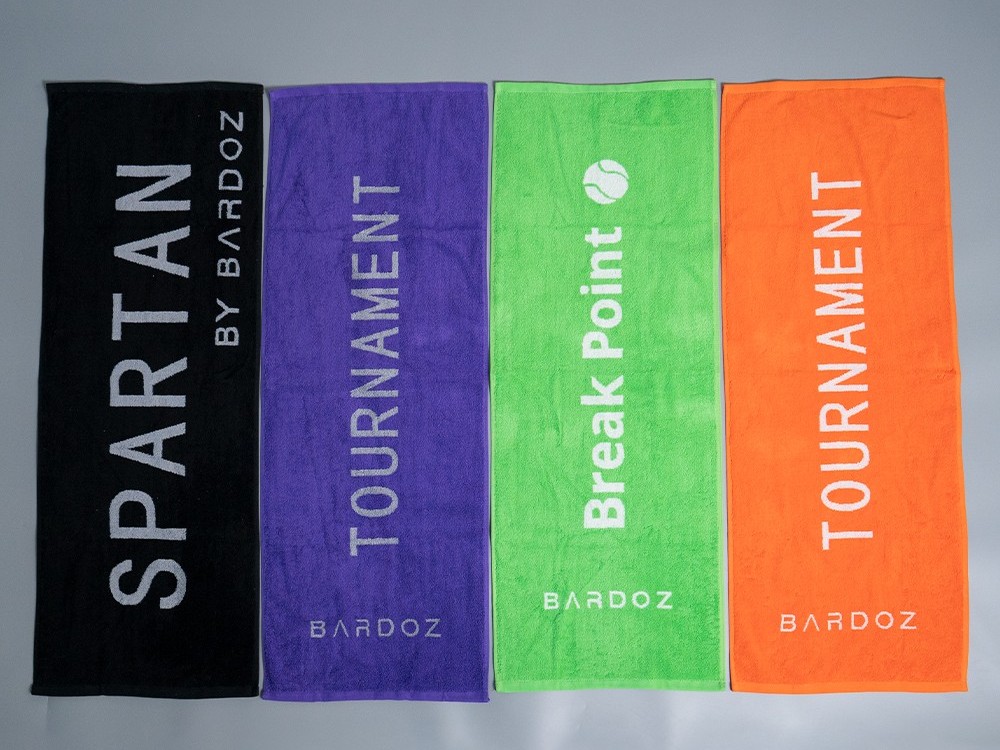On the cost list of hotel operations, the expenses for purchasing and replacing linen are often the "silent major part". Many hotels only focus on the "unit price" when making purchases, but they overlook the hidden costs such as the actual service life of the linen, washing losses, and in......
On the cost list of hotel operations, the expenses for purchasing and replacing linen are often the "silent major part". Many hotels only focus on the "unit price" when making purchases, but they overlook the hidden costs such as the actual service life of the linen, washing losses, and inventory overstock. As a manufacturer deeply engaged in the field of hotel linen customization, we are well aware that true cost optimization is not merely about "reducing prices", but rather about ensuring that every penny of the procurement budget is spent where it counts through customized solutions. From material matching to supply chain collaboration, customization can help hotels reduce their overall procurement costs by more than 20% from the source. Behind this lies a systematic cost reduction logic.
1. Customized on Demand: Reject "standardized waste" and spend money where it counts
Standardized linen may seem "universal", but in fact, it conceals a great deal of waste. A certain chain hotel once reported that the uniform-sized bed sheets purchased were too wide for large bed rooms (prone to friction and wear) and too short for small bed rooms (forced to be phased out ahead of schedule), with an annual waste rate as high as 30%. The first step of a customized solution is "precise matching" :
Scenario-based material grading: Instead of recommending "80-count long-staple cotton" for economy hotels (excessive quality leads to purchase premium), we customize "60-count cotton + 10% polyester fiber blend" fabric - which not only meets the basic comfort level but also has a 40% higher washeability than pure cotton linen, and the purchase price per set is reduced by 15%. Customized "lightweight long-staple cotton" for high-end resort hotels ensures texture while reducing the fabric weight. The cost per set is reduced by 8%, and the washing energy consumption is decreased by 12%.
Zero-error size design: Customize bedding based on the actual size of the hotel mattress (rather than the industry "standard size"), such as customizing exclusive bed sheets for 1.85-meter non-standard mattresses, to avoid "wrinkles and wear caused by being too large" or "embarrassing edge exposure caused by being too small", and extend the actual service life of the linen by 20%.
Functional modular combination: Instead of providing "bed tail covers" for all guest rooms (the actual usage rate in most hotels is less than 30%), flexible customization is made based on room types - business rooms retain bed tail covers (to enhance the sense of ceremony), and family rooms replace them with wear-resistant bed covers (to reduce wear and tear from children's tramples). A single batch purchase directly saves 12% of redundant expenses.

2. durability upgrade: Extend the life cycle and spread out the unit cosThe "high price" of linen is often not because it is expensive when purchased, but because it is exchanged too frequently. A certain hotel has calculated that for a set of bed sheets priced at 100 yuan, if they are discarded after three months of use, the average monthly cost is 33 yuan. A set of custom-made bed sheets priced at 120 yuan, if used for six months, has an average monthly cost of only 20 yuan. Customization extends lifespan through process optimization, and its essence is "exchanging a moderate initial investment for a lower long-term cost" :
Strengthening of vulnerable parts: The "double-thread edge wrapping + reinforced webbing" process is adopted at the edges of bed sheets and the zippers of quilt covers to solve the problem of thread breakage caused by repeated pulling of traditional linen, reducing the damage rate by 60%. The seams of the pillowcase are replaced with "arc lock edges" to prevent premature scrapping caused by dirt accumulation at right angles.
Washing adaptability modification: Customized "anti-hard water fabric" for hotels in the north (to reduce yellowing and brittleness caused by scale adhesion), and customized "anti-mold and antibacterial treatment" linen for humid areas in the south (to reduce the proportion of discarded due to mold). Tests have shown that the average number of washes for linen can be increased from 100 to 150 times.
Repairable design: "Invisible mending positions" are reserved at the corners of the linen. In case of minor damage, it can be reused by simple mending instead of being scrapped directly. A certain cooperative hotel has thereby increased the linen repair rate to 35% and reduced the annual replacement cost by 25%.

3. Supply Chain Collaboration: From "Stockpiling" to "Precise Supply", Revitalizing Cash Flow
In the traditional procurement model, hotels often "overstock" to avoid stockouts, which leads to capital occupation and inventory loss (such as overstocked linen getting damp and outdated styles). Customized manufacturers help hotels achieve "on-demand replenishment" through a "flexible supply chain", increasing capital efficiency by 30%.
Small-batch and multi-batch supply: Breaking the "minimum order quantity" limit, it supports small-batch replenishment of 30 to 50 sets, allowing hotels to dynamically adjust inventory based on occupancy rates (such as adding 50 sets before peak season and suspending during off-peak season), and increasing inventory turnover rate by 50%.
Exclusive inventory warning service: Establish linen usage files for partner hotels, predict the replacement cycle based on data such as washing frequency and purchase time, and send replenishment reminders 15 days in advance to avoid premiums caused by "urgent purchases" (temporary urgent orders are often 20% more expensive than regular orders).
Residual value recovery program: For linen that meets the scrapping standards, manufacturers can recycle and regenerate it (such as transforming it into rags or storage bags), returning 3% to 5% of the purchase price to the hotel, achieving cost recovery in the "last mile".
4. Data Speaks: A True Calculation of 20% Cost Optimization
Take a mid-range hotel with 300 rooms as an example:
Traditional procurement: Standardized linen is selected, with a single set purchase price of 180 yuan. It is replaced twice a year, and the annual procurement cost = 300×180×2= 108,000 yuan.
Customized solution Scenario-based customized linen (200 yuan per set), with a service life extended to 2 replacement times every 3 years (an average of 1.33 replacement times per year), the annual procurement cost = 300×200×1.33≈ 79,800 yuan, directly saving 28,200 yuan, and the comprehensive cost reduced by 26% (including inventory, loss and other hidden costs).

Customization is not a "luxury", but the most practical choice for cost reduction
For hotels, the core of optimizing linen costs is not "buying cheaply", but "using cost-effectively". The value of customized solutions lies in transforming linen from a "standardized commodity" into an "asset that meets the hotel's needs" - reducing waste through material matching, extending its lifespan through technological upgrades, and revitalizing funds through supply chain collaboration. By choosing a custom manufacturer that can provide "full-cycle cost estimation", hotels can not only save more than 20% of their procurement costs, but also transform linen management from a "cost burden" into a "profit growth point". After all, every penny saved is the hotel's pure profit.

Towel Brand:Dream Princess Material:Pure cotton Size:customizable Process:embroidery Features:Quick drying, soft and durable

Towel Brand:Dream Princess Material:Pure cotton Size:customizable Process:embroidery Features:Quick drying, soft and durable

Towel Brand:Dream Princess Material:Pure cotton Size:customizable Process:embroidery Features:Quick drying, soft and durable